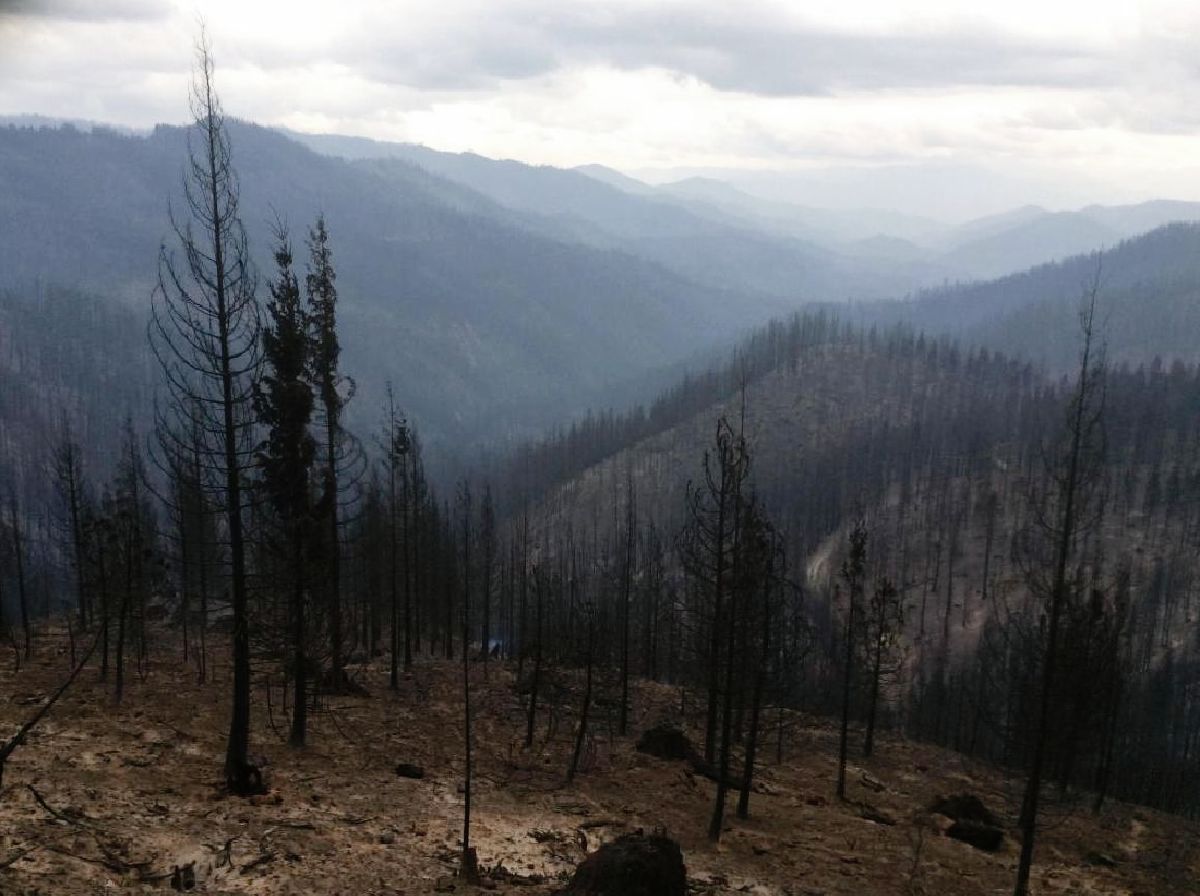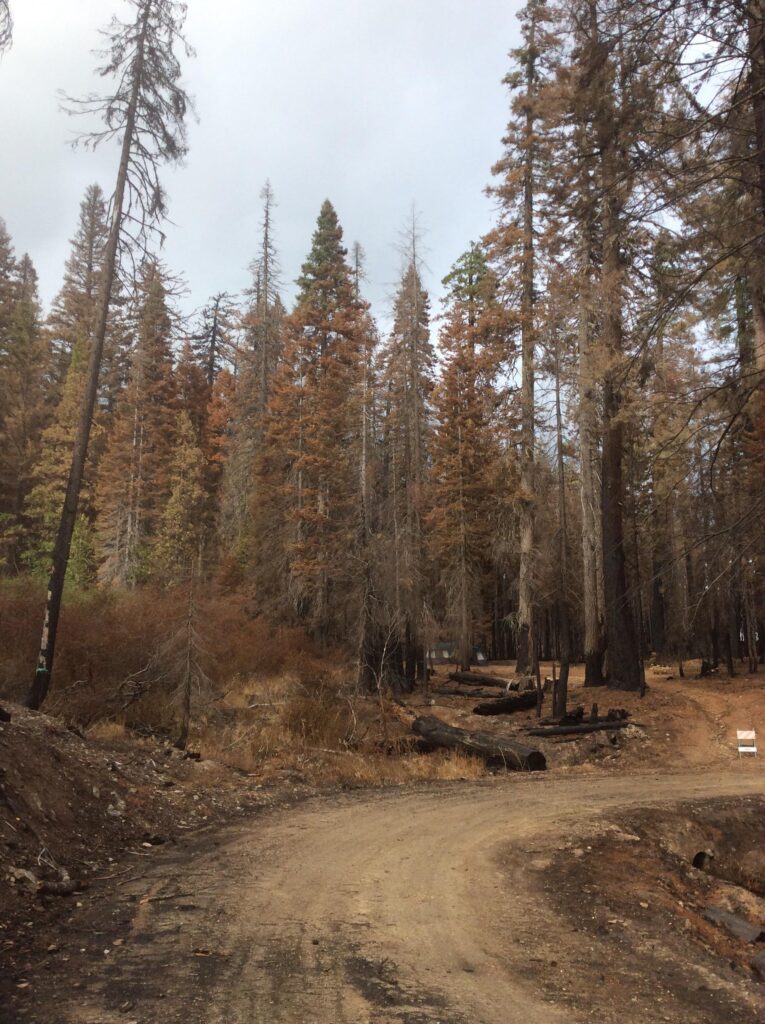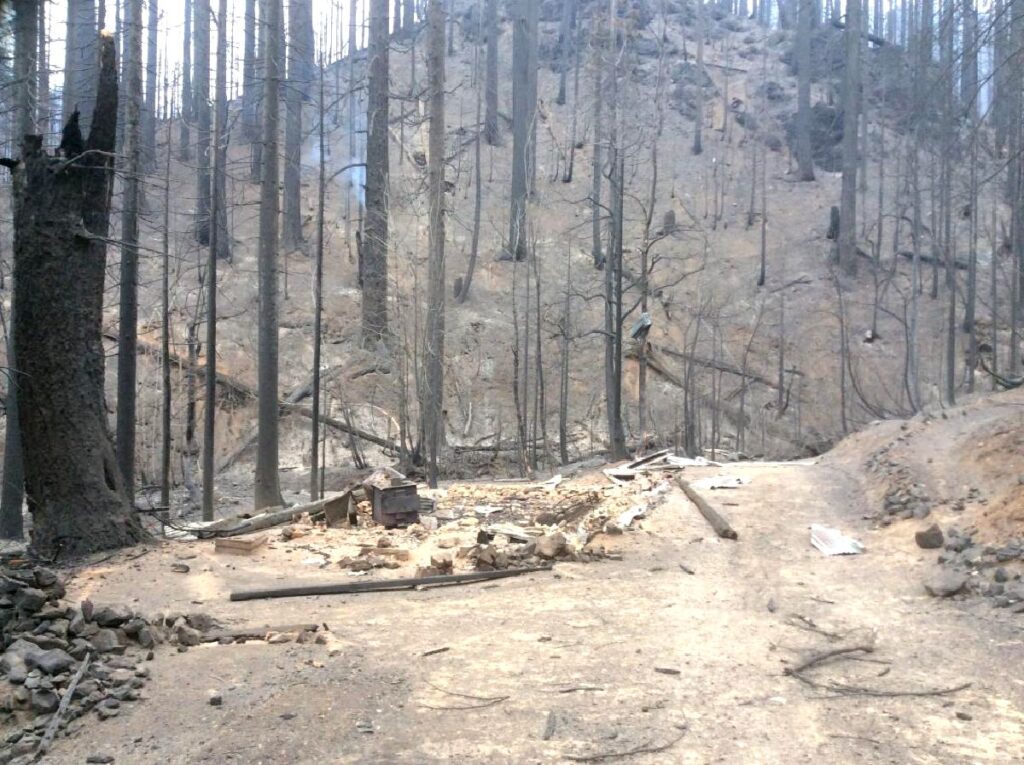
Recovery vs. transformation after the 2020 fires
Many thanks to Earl Crosby and Bill Tripp for contributing to this story
In September and October 2020, the Slater and Devil Fires burned over 150,000 acres and devastated the town of Happy Camp, located within Karuk Ancestral Territory. Earl Crosby, Deputy Director of Karuk Dept. of Natural Resources’ (KDNR) Watersheds Branch, was assigned as a designated Tribal Representative to that fire. He recounts how he and other community members did their best to ensure communities stayed together even as Siskiyou County officials tried to forcibly evacuate residents. During the fire, he witnessed how Pacific Power & Light “ran roughshod” over people and places within and around Happy Camp. Their clearing of right-of-ways to restore power took out any tree, live or dead, hardwood or softwood, that got in the way of power lines. Crosby and Bill Tripp, Director of KDNR, call out how even Black Oaks, an important cultural species, were cut and dumped without consultation. Ever since the fire until now, KDNR has also been interfacing with the US Forest Service as they plan post-fire salvage logging
As he has spoken on and written about many times (see here and listen here), Tripp says the 2020 fires and the official US response and recovery efforts are all “precursored by a century or more of mismanagement.” By taking local Indigenous people out of the system and moving to extraction-based land management, the US has put the Karuk and other Tribes into “a situation where we have to respond to the fact that they’re responding to the mess they’re creating.” Tripp views this situation as a fundamental and major socio-environmental injustice. He calls out that species like the Blacks Oaks will be the real saviors. The name of Happy Camp in Karuk translates to “the place where Hazel creek flows through.” And where does Hazel grow? It grows where Black Oaks grow and where healthy fire is, Tripp noted. Collaboration between Indigenous governments and communities and the US government and settler communities is happening more and more. But the entire situation in and around the horrific Slater Fire set some of those relationships back and “revives that generational pain of cultural genocide.”
Crosby and others are now working to transform the fire emergency response and recovery efforts into forest restoration to promote long-lasting wellbeing of the forests and their communities. They are asking “what does the landscape need to take fire again?” and are carefully marking culturally important trees to leave, prior to salvage logging, so they can re-seed and revegetate on their own. KDNR is working with a local mill in Yreka to purchase the salvaged fir, pine, and incense cedar, which will provide seed money for other restoration efforts. The plan is to have fuels reduction treatments complete by this summer, while restoration efforts will likely ramp up next year.
Also, Crosby hopes to get more and more community members involved, particularly in helping ensure that invasive plants like Scotch Broom and Himalayan Blackberry don’t take over and ruin the chances of native grass seedbank recovery. KDNR also obtained a good number of sugar pine logs and other cultural species (due, unfortunately, to the harmful excesses of the fire response and recovery) and will be working with community members to learn and hone traditional skills for canoes and ceremonial structures. Part of this restoration work also includes advocacy to reintroduce cultural burns to reduce the risk of catastrophic fires like the Slater Fire. To that effect, on March 17th, the Karuk Tribe and a diverse coalition of partners released Good Fire: Current Barriers to the Expansion of Cultural Burning in California and Recommended Solutions, a comprehensive report outlining challenges and policy solutions for better managing wildfires in California.

